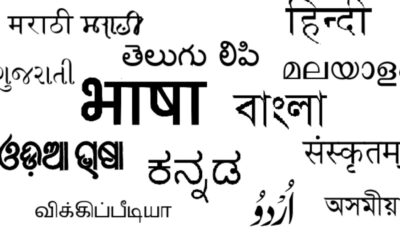Empowerment is a process which encourages individuals to take their own decisions. It also includes financial as well as social freedom to bring change in their communities. With respect to women withstanding their rights and entitlements as citizens of our country, it gives them a sense of empowerment by having equal opportunity to work, equal wages, preventing discrimination and making life-changing decisions through different problems in the society.
If we look at women at the level of their families, communities or society, they are getting discriminated based on caste, class, gender, and colour. From historical standpoint as well, women were always seen as a subjugation to men due to their physical strength and financial control. Women have been considered incompetent to take their own decisions and have depended on men. Occupations were divided as masculine and feminine due to which education was not provided to most of the women. These factors hinder them in fulfilling their social as well as practical needs.
Another aspect of looking at women empowerment is through their participation in the existing decision making platforms. In the context of rural India, such platforms are Gram Sabha and Gram Panchayats.
Let me take you through the story of a woman PRI (Panchayati Raj Institution) member’s life from Barwani district, Madhya Pradesh (One of the remotest districts in India). Her name is Ramli Bai*. She belongs to a tribal family and is practical in her thought process as well as attitude. Unlike other women in her village, she doesn’t feel dependent over her husband for every decision she has to make. Ramli supports her community by taking lead wherever needed. She is the member of the communist group Adivasi Mukti Sangathan formed by Madhuri Ben, an activist working in this area.

Being an active member, Ramli shows her concerns at Panchayat level and knows where and how she needs to raise her voice. Due to these reasons, she was elected as a ward member and is the only woman panch (ward member) from her village. She listens to her community members and speaks up in the meetings.
It’s hard to find self-motivated people who think about others in situations where no other single person can do that. Our constitution has given equal power to women to be a part of the decision making processes. Their representation becomes important as women constitute half the population of the country. Their issues are different than men and critical. Their participation in the economy is significant. India has approximately 7 lakh villages which are self-regulating themselves. If we look at the role of women in these villages, it was not encouraged initially as the idea of Panchayat emerges from the old models of Khaap panchayat or tribal panchayats which were powerful in their own ways of regulating and governing local systems but were male dominated where the major development decisions were taken by men.
Women issues were not discussed in these democratic forums and hence, they remained unrepresented. Panchyati Raj Institution Act, 1992 gave reservation to women in tribal areas with 50% representation to decrease the inequality in these representative bodies. It was a big step to equalize governance leadership. As women do not live in isolation and they interact with other variables in the system, this didn’t turn out to be a major step for an increase in their participation. They were yet again shown that their place in the society was subordinate to men. Not being able to leave even a bit of household chores did not allow them to exercise their rights and entitlements completely. Even today, most of the women are only represented in registers through their signatures.
After India got freedom, all the women selected as Constituent Assembly members were highly influential and intellectual such as Sarojini Naidu, Rajkumari Amrit Kaur and Hansa Jivraj Mehta. All of them were a part of freedom movement. As compared to centre, when it comes to the state level or local level democracy, the active participation of women declines drastically. There are NGOs like PRIA and UN Women who work directly on increasing women participation in Panchayats and at state and national level. There are others whose approach is to create women federations at village, block and district levels, enabling them gave to exercise their rights as a part of a collective.

There are many case stories on Panchayati Raj Institutions that talk about the model of good governance run by women sarpanchs and panchs. A couple of examples are of Bhakti Sharma, sarpanch of Barkhedi Abdullah, Bhopal and Vandana Bahadur Maida, sarpanch of Khankhandvi village, Madhya Pradesh. They can give aspiration to other women to become the PRI members in our country. However, there is a lack of women role modelling as often women do not opt to stand in elections because of various socio-economic reasons that come into play. I sometimes ponder on questions for which I don’t understand whether the issue is lack of participation of women in the Panchayati Raj Institution, level of women education or something else. Some of those are:
- If the educated women IAS and women MLAs, MPs can command respect, why not the educated PRI members?
- If educated leaders will not support the women in PRI, how will it strengthen?
- Is the participation of women limited because of gender issues or is it a political issue, or are they overlapping in a bigger system?
*Name changed to protect identity




Interesting take. I recently did a systems thinking course and we drew a systems map on low levels of literacy in tribal communities. We identified that ‘role models’ factor a big role in the overall system. It would be interesting to see this as well from a systems perspective.